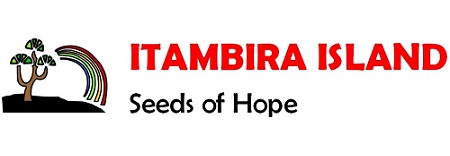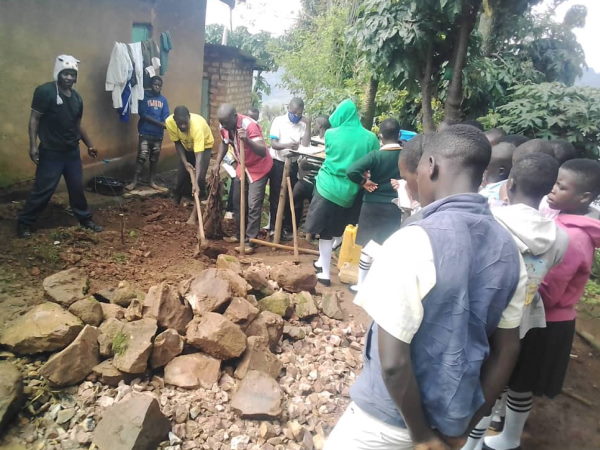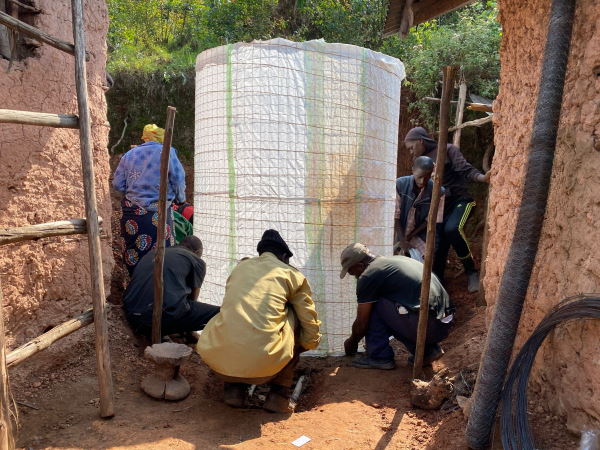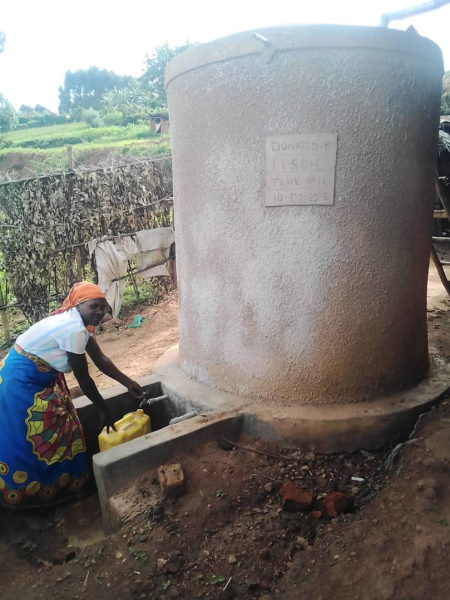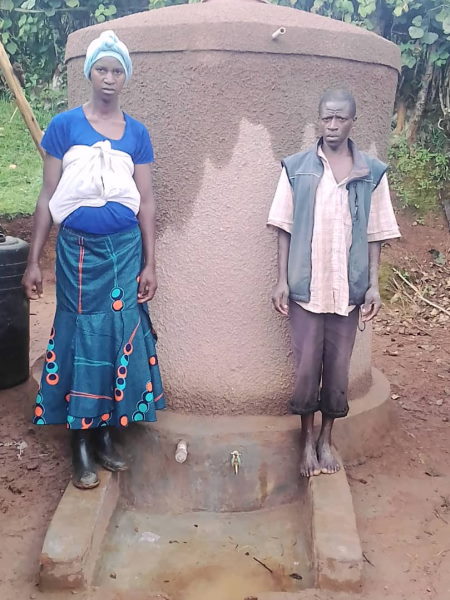Rainwater harvesting programme summary
Building water tanks (4,000l) to collect water off the iron roof and save time and energy climbing steeps slopes to the lake each day to collect water.
Water is cleaner than that in the lake and regularly available when managed well.
Families are trained and contribute to building with labour and local resources local resources.
Training on sanitation and hygiene are part of the programme.
Cost of a tank is £300 and demand is great and donations welcome.
The situation:
The people who live around the Lake Bunyonyi are faced with a big burden of collecting water from the lake. They tend to live further uphill, leaving the lower fields, which are more fertile as a result of soil erosion, for cultivation. The distances they have to walk to collect water are therefore great, in some places up to 2km, and a return trip can take more than 2 hours on steep slopes.
This not only creates a burden to the women and children who are the main water carriers, but takes time which could otherwise be used in more productive activities like cultivation, which is the main source of livelihood. Children also occasionally report to school late or spend alternate mornings off school, due to the fact that they have to collect water for their households first.
As a result of all this, the quantities of water available to use are insufficient to ensure good hygiene practices like hand washing at critical times, good domestic and personal hygiene, and for drinking This causes a high prevalence of water related diseases like diarrhea, intestinal worms, typhoid and scabies, among others. In addition, women suffer back pain and ill-health, and cannot therefore go about their daily duties as would be required. The performance of children at school is poor as they do not have time to concentrate on their studies and time for play.
Amidst this situation, there are sufficient quantities of water for most of the year (save for a three-month dry season running from June to August), which can be collected from the roofs of the houses, with gutters, into medium sized water tanks (4,000 liters).
What we do:
The Itambira Island Seeds of Hope project aims to improve this situation by supporting households to construct rainwater harvesting tanks to collect rainwater from their roof tops.
How this is done:
The beneficiary households are expected to make a contribution of locally available materials plus all the skilled and unskilled labour. At least one member of a household is trained by skilled personnel in how to construct the tank, after which the household will be supported with non-local materials like cement, reinforcements and gutters and expected to build the tank for themselves. This will instill a sense of ownership and reduce the costs of construction considerably.
Outcomes:
- Reduced distance to water points hence reduced burden
- Increased water consumption at household level hence improved health
- Time for water hauling saved for other activities
- Increased school attendance hence child performance
Costs:
The total non-local cost of putting up a tank is GBP 300 Including training. In addition, the beneficiaries contribute with labour and locally available resources.
